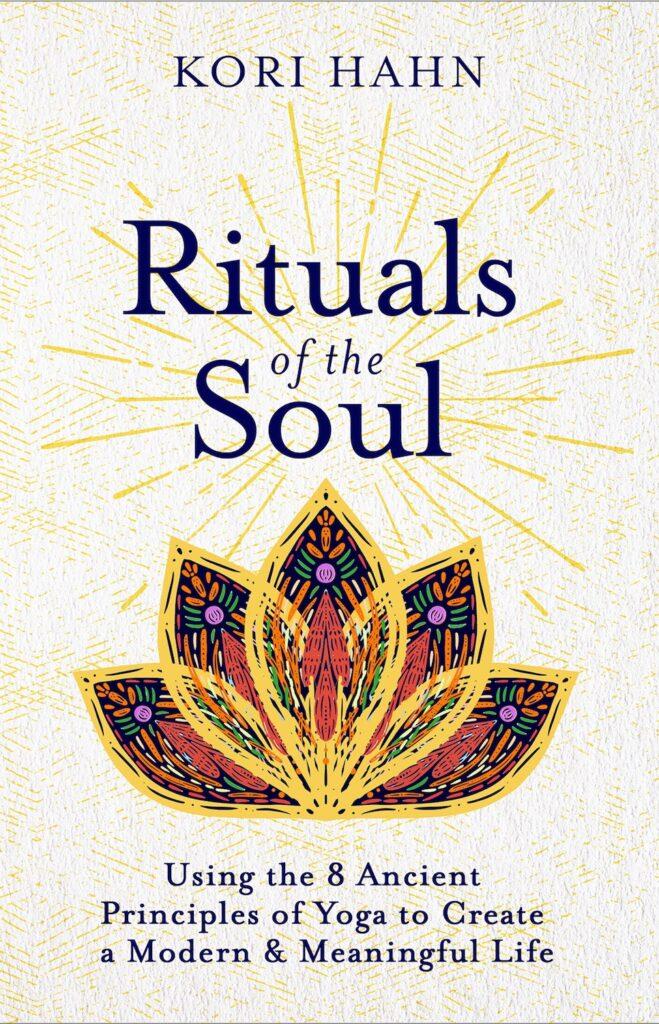Unblocking and Becoming: an excerpt from Rituals of the Soul by Kori Hahn
A few years ago, I took a trip into the Tibetan Autonomous Region of China, the Dalai Lama’s homeland before he became a political exile to India.
I always dreamed of seeing “the Rooftop of the World,” probably more than any other place. The mountains of the region are the tallest on the planet.
Its culture and history are rich, and the spiritual beliefs that were born here have spread all over the world.
China had just recently completed a new rail line spanning 2,300 miles, beginning in Beijing and gaining 16,400 feet in altitude at the highest point before pulling into the last stop in Lhasa, Tibet. Lhasa is the capital of the province and was the religious and political center for Tibetan Buddhism until the Chinese forcefully and inhumanely took over the entire country in 1949.
As a tourist to Tibet, I was forced to follow the Chinese authorities’ strict rules and guidelines for how I could travel there. I spent weeks in the polluted city of Xining midway along the train journey, organizing all the necessary permits and paperwork required for me to travel through the eerily watched-over province. I had to be escorted at all times by a government-approved guide and hire my own private driver and car to take me anywhere I planned to go. As difficult as the process proved to be, there was no stopping me. I was determined to see this place, to understand its culture, and to spend time with its people.

To my relief, I was appointed a Tibetan guide. Tenzin, who had a warm, sincere demeanor about him, was waiting for me on the train platform as soon as the last horn blew into the station. There weren’t many tourists around, so it was easy for him to spot me, the young American girl carrying an oversized backpack with a yoga mat strapped to the side.
From the train station we walked the short distance to our basic little Tibetan homestay in the Barkhor, the old Tibetan part of the city, located around the Jokhang Temple, believed to be the most sacred and important temple in Tibet. Lhasa in Tibetan means “place [sa] of gods [lha],” and it is easy to see why. From our simple room, we could see the towering white presence of the Potala Palace, the fortress that used to be home to the Dalai Lama.
Every time we walked out of our guesthouse, we immediately entered a constant flow of pilgrimaging devotees circling the temple day and night, chanting and praying. Thick-robed Tibetans holding prayer beads were performing full-body prostrations in every direction I looked. The Tibetans’ style of full-body prayer involves reaching to the sky with their hands in prayer position, sliding their bodies along the ground to lie flat on the earth, coming back to standing, then taking a step forward and doing it all over again.
Many of these pilgrims had traveled thousands of miles, praying and sliding their bodies along every inch of the way; it was a means of earning merit by burning off past bad karma. These devoted practitioners were filthy, covered in road dirt and grime from head to toe, but to me their spiritual dedication was the most inspiring and purest sight I had ever seen.

The smell of yak butter lamps filled the narrow cobblestone streets, billowing out of the main Jokhang Temple. Inside the walls were covered in black soot from the smoke of candles, incense, and yak butter, always burning, year after year. At this point in my life, I was deeply curious about the different ideologies of religion, especially Buddhism. I walked around with my eyes peeled open, as this was the most confident spiritual display I had ever seen. I needed to know everything: What did the flowing prayer flags mean? And the beads they held in their hands? Why did the people prostrate to the point of pain? Tenzin proved incredibly helpful for explaining the rituals I saw the Tibetans performing throughout the trip and what they signified to the people.
After a week in Lhasa, I threw my dusty backpack in the back of an old white SUV, and Tenzin, our driver, and I began driving across the vast, barren alpine region to the Nepali border. It was already late November by the time we were allowed to begin the journey, and it was getting cold. Along the way we stayed in yak-dung-constructed Tibetan houses where the homeowners would serve us endless cups of yak butter tea as we sat around their simple potbellied stoves to stay warm. I remember shivering through most nights.
We would usually sit in silence, but on occasion the locals from the village would try to share their personal life stories with me in barely comprehensible English. I understood their stories, though, intuitively. They would tell me of a missing cousin or brother, or how they managed to escape to India and meet the Dalai Lama, only to walk back across the snow-covered passes to be with their families again.
It didn’t take long to realize just how inhumane the Tibetan people are treated by the ruling Chinese. There is no freedom for the Tibetan people; the Chinese government does not allow them to possess pictures of, speak about, or pray to the Dalai Lama within Chinese-ruled Tibet. The people who shared their stories of escaping to India and returning had risked being shot both ways. If the Chinese believe Tibetans are not honoring their rules, these Tibetans often go missing, never to be seen again.
Many of the stories and explanations they shared with me could have led them to prison or worse, death. I read numerous books on Tibetan Buddhism and the history of the country while traveling there, and most included pictures of the Dalai Lama on the cover or inside. (I now realize I am very lucky not to have been caught with these.) When the Tibetans’ eyes would catch a glimpse of His Holiness on the cover of one of those books, they would stop everything they were doing and hold it in their hands, often putting the picture to their forehead and saying a prayer before kindly handing it back.
I always offered these pictures to them to keep, and they always refused. To be caught with a picture of His Holiness would lead to imprisonment, torture, and often death. It simply wasn’t worth the risk. They seemed grateful to have touched some sort of physical reminder of him, a rarity indeed there.
Despite the struggles ever present for the Tibetans living in China, I found it incredibly inspiring to see how they very much stayed connected to their religious leader and their spiritual rituals, despite the risks involved. Although they still performed their rituals publicly, most had adapted their spiritual and personal growth practices into more internal practices. I got the feeling that most of the Tibetans I met never lost focus on the spiritual self, staying true to what they believed in their hearts and souls no matter what was happening around them.
The voice of our soul is our truth. Even when everything around us is telling us we are wrong, we must keep listening to this truth. We don’t need our senses to validate how we are feeling. We don’t even need our external world to agree with how we are feeling. We merely need to stay true to our soul and the guidance it offers us, overcoming any obstacles and struggles that appear along our spiritual path as we align with that truth.
The Tibetans might not be able to vocally and publicly display their full soul truth inside China, but they are very much committed to honoring it within. Many have chosen to escape to neighboring countries like Nepal and Bhutan to pursue their dream of meeting the Dalai Lama or perhaps to receive a Tibetan Buddhist education. It is believed that more than 150,000 Tibetans have made the heroic, long, and incredibly hostile journey across the plateau into safer lands. Their hearts always guide them.
We walk our unique spiritual path by living our life guided by the messages of our soul. Our spiritual purpose for coming here to Earth in this human body is to do just that, to stay focused on what the heart and soul want.
Sometimes we have to leave our home for a new land when our current life situation isn’t conducive to pursuing the visions of our heart and soul. There might be roadblocks that stand in our way. For many of us, the blockages and challenges holding us back from creating a reality of our soul-sent dreams do not come from the external, but from the internal. However, if we compassionately and patiently open ourselves to the obstacles blocking us, we expand ourselves and grow in the areas our heart is yearning toward. This is how we become what our soul is asking from us.
Kori Hahn is the author of Rituals of the Soul and the founder of a community gathering place called the Santosha Society, which is dedicated to travel, surfing, and the soulful.
She hosts numerous trips around the world for hundreds of women who study Ayurveda, yoga, meditation, and all things related to soul growth, knowledge, and fulfillment.
Excerpted from the book from Rituals of the Soul. Copyright ©2021 by Kori Hahn. Printed with permission from New World Library — www.newworldlibrary.com.






